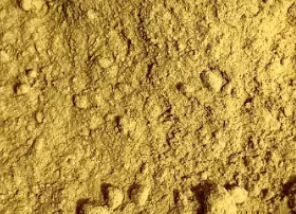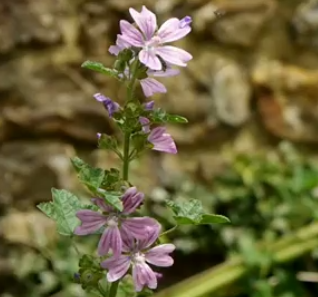Check the ingredients!
... live healthy!


| "Descrizione" by Frank123 (12008 pt) | 2023-Feb-15 13:57 |
| Evaluation | N. Experts | Evaluation | N. Experts |
|---|---|---|---|
| 1 | 6 | ||
| 2 | 7 | ||
| 3 | 8 | ||
| 4 | 9 | ||
| 5 | 10 |
Malva sylvestris extract/malva syivestris (mallow) extract is the extract obtained by drying the plant of the same name and subsequent extraction using water vapour and water.
It appears in the form of a yellowish to brown powder.

Mallow (Malva sylvestris L.), a plant belonging to the Malvaceae family, is found in Europe, Asia and North Africa.
What it is used for and where
Medical
Due to its wide use and medicinal importance, many studies have been carried out; however, the information in the literature is many and very scattered, making it difficult to use (1).

In Mallow there are powerful antioxidants (phenols, flavonoids, carotenoids and tocopherols), unsaturated fatty acids (e.g. alpha-linolenic acid) (2), and 143 volatile compounds have been catalogued including Hexadecanoic acid, Linalool, Limonene, Menthol, Eugenol, Tocopherol (3), Scopoletin, Chloroform, Malvidin.
The aim of this study was to study the in vitro anti-inflammatory activity of Malva sylvestris extract and fractions in a co-culture model of cells infected with Aggregatibacter actinomycetemcomitans. The chloroform fraction was the most effective in reducing bacterial colonization. Mallow sylvestris and its chloroform fraction minimized Aggregatibacter actinomycetemcomitans infection and inflammation processes in oral human cells (4).
The leaves have topical anti-inflammatory activity, the compound 3-glucoside malvidin seems to be primarily responsible for this effect, with the participation of other anti-inflammatory compounds in the extract, such as Scopolamin and Malvidin and therefore mallow can be used as a future treatment for skin disorders (5).
This study confirms the cardioprotective effects of MS in reducing oxidative stress and inflammatory response in this study confirms the cardioprotective effects of Malva sylvestris L. in reducing oxidative stress and inflammatory response in ischemia/reperfusion rats (6).
Cosmetics
Mallow extract is derived from flowers and leaves and contains flavonoids, tannins and mucilage which have a moisturising and emollient effect and a soothing effect on dry skin.
Skin conditioning agent - Emollient. Emollients have the characteristic of enhancing the skin barrier through a source of exogenous lipids that adhere to the skin, improving barrier properties by filling gaps in intercorneocyte clusters to improve hydration while protecting against inflammation. In practice, they have the ability to create a barrier that prevents transepidermal water loss. Emollients are described as degreasing or refreshing additives that improve the lipid content of the upper layers of the skin by preventing degreasing and drying of the skin. The problem with emollients is that many have a strong lipophilic character and are identified as occlusive ingredients; they are oily and fatty materials that remain on the skin surface and reduce transepidermal water loss. In cosmetics, emollients and moisturisers are often considered synonymous with humectants and occlusives.
Cosmetic astringent. This ingredient exerts a direct effect on the skin by tightening dilated pores by contracting stratum corneum cells and removing superfluous oil.
Skin conditioning agent. An ingredient that is the mainstay of topical skin treatment by restoring, increasing or improving skin tolerance to external factors, including melanocyte tolerance. The most important function of the conditioning agent is to prevent skin dehydration, but the subject is rather complex and involves emollients and humectants.
The most relevant studies on this ingredient have been selected with a summary of their contents:
References_____________________________________________________________________
(1) Gasparetto JC, Martins CA, Hayashi SS, Otuky MF, Pontarolo R. Ethnobotanical and scientific aspects of Malva sylvestris L.: a millennial herbal medicine. J Pharm Pharmacol. 2012. February; 64(2):172–89. doi: 10.1111/j.2042-7158.2011.01383.x
(2) Barros L, Carvalho AM, Ferreira IC. Leaves, flowers, immature fruits and leafy flowered stems of Malva sylvestris: a comparative study of the nutraceutical potential and composition. Food Chem Toxicol. 2010. June; 48(6):1466–72. doi: 10.1016/j.fct.2010.03.012
(3) Characterization of aroma-active compounds in dry flower of Malva sylvestris L. by GC-MS-O analysis and OAV calculations. Usami A, Kashima Y, Marumoto S, Miyazawa M. J Pharm Pharmacol. 2012 Feb;64(2):172-89. doi: 10.1111/j.2042-7158.2011.01383.x.
(4) Malva sylvestris Inhibits Inflammatory Response in Oral Human Cells. An In Vitro Infection Model. Benso B, Rosalen PL, Alencar SM, Murata RM. PLoS One. 2015 Oct 19;10(10):e0140331. doi: 10.1371/journal.pone.0140331. eCollection 2015.
(5) Pre-clinical anti-inflammatory aspects of a cuisine and medicinal millennial herb: Malva sylvestris L. Prudente AS, Loddi AM, Duarte MR, Santos AR, Pochapski MT, Pizzolatti MG, Hayashi SS, Campos FR, Pontarolo R, Santos FA, Cabrini DA, Otuki MF.
Food Chem Toxicol. 2013 Aug;58:324-31. doi: 10.1016/j.fct.2013.04.042. Epub 2013 May 16.
(6) Cardioprotective effect of Malva sylvestris L. in myocardial ischemic/reprefused rats. Zuo H, Li Y, Cui Y, An Y. Biomed Pharmacother. 2017 Nov;95:679-684. doi: 10.1016/j.biopha.2017.08.111.
| Evaluate |